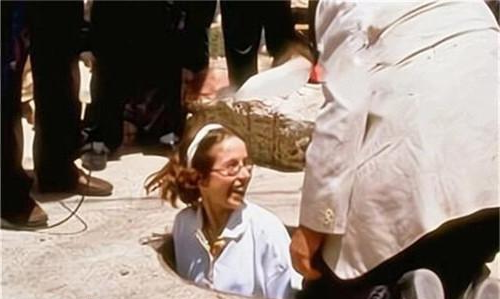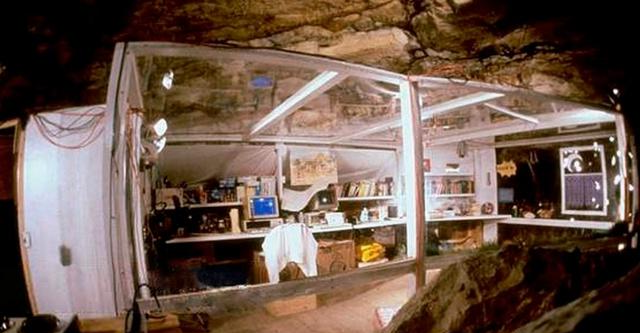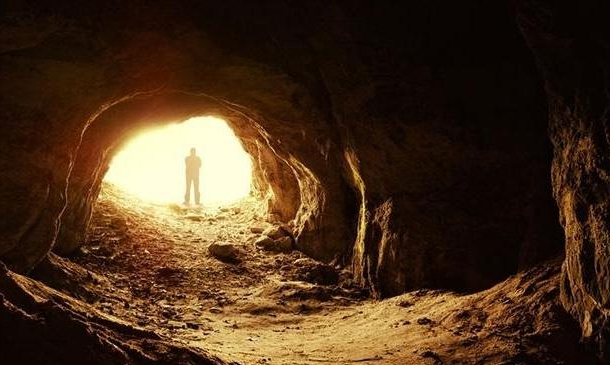In 1989, NASA conducted an experiment to prove that time does not exist. They placed a 27-year-old woman in a cave to live in isolation, monitored only by electronic devices tracking her brain hormone changes. After 130 days, when the cave was opened, the woman pushed the staff aside, unwilling to leave.
Why Time Matters
Time plays a crucial role in our daily lives, from eating to working, we follow its rhythm, habitually checking our phones or watches. Imagine a day without time; the chaos would be unimaginable, with no way to plan activities, and life’s rhythm disrupted—a result nobody wants.
Although time is just a series of numbers, ordinary people struggle to understand its origin, yet it has a significant impact on humanity. Some scientists believe time does not exist, merely a concept, and have conducted experiments to prove their theories.

The Groundbreaking “Time” Experiment
In 1989, sociologist Maurizio Montalbini claimed that time does not exist, causing quite a stir. Many criticized him for seeking fame with such outrageous statements, calling his behavior that of a madman.
To validate his claim, Montalbini planned the “Time” experiment, surprisingly receiving support from NASA for astronaut data research during space missions.
Even Einstein had similar views, suggesting that time is a human perception, an illusion that would collapse if our perception changed.
NASA, leading the experiment, sought a volunteer to live in isolation in a cave, completely devoid of time’s concept, to see if the body would undergo abnormal changes.

The Experimental Setup
The experiment took place in a secluded spot in Mexico, where a cave about the size of a room, with an area of 18 square meters, was selected as the base. The cave, about 30 meters below ground, was cut off from the outside world except for air circulation.
NASA offered generous rewards for volunteers willing to live in the cave for 210 days, with all amenities provided, including food, accommodation, TV, computers, and books for entertainment, all adjusted to not display time.
Volunteers could do as they pleased, eating, sleeping, and watching TV without interference, but staff monitored brain hormone changes through electronic devices to understand how the brain reacts without time and to observe any physical changes to prevent accidents.
Selecting the Volunteer
Many applied for the experiment, attracted by the rewards, but NASA had stringent criteria due to the experiment’s risks. Candidates needed physical and psychological resilience.
After testing a large group of applicants, 27-year-old Frine from Italy, an interior decorator, was selected.
Frine was thrilled to be chosen and shared her joy with her family, who warned her against becoming a “lab rat.”
Undeterred, Frine, tired of her low-paying job and long hours, saw the experiment as a chance to earn money by simply eating and sleeping. She viewed it as an extended vacation, a break from the monotony of her life.

Life in the Cave
Initially, Frine felt no different, living as if in her own room. Without time, she still managed to eat and sleep on schedule based on her previous habits.
When bored, she would use the cardboard boxes meant for food storage to make decorations, hanging them around her bed, effectively turning the cave into her home.
Without time, her focus on tasks became more intense, and she even won several card games on the computer, something she hadn’t done in a long time.
Challenges and Consequences
Within a month, however, the lack of time disrupted her life. Not knowing day from night, she lived in a constant state of light from three incandescent bulbs, eating when hungry and sleeping when tired, with no biological clock.
Staff monitoring her brainwaves noticed she would stay awake for over 20 hours, then sleep for 10, leading to significant fluctuations in her brain activity and anxiety.
More severe symptoms followed; Frine became disoriented, often talking to herself, lost weight, and neglected personal hygiene. Her condition suggested potential life-threatening risks.
For safety, NASA decided to terminate the experiment after 130 days. When the cave was opened, Frine was found lying on the ground, unresponsive. When staff attempted to help her, she pushed them away, unwilling to leave.

The Aftermath
1. Loss of Cognitive Function: Frine, upon exiting, was in a terrible state, unable to recognize her surroundings or think for herself, requiring constant care like a newborn.
After medical treatment, she could speak but misjudged the time spent in the cave, estimating only 60 days. Her lifestyle was chaotic, unrecognizable to her family, and she needed a long time to recover.
2. Weight Loss and Physical Decline: Despite having food, her lack of appetite and constant worry led to a 17 kg weight loss, pale complexion, and severe calcium loss in bones and muscles, requiring extensive nutritional support.
3. Experiment Failure: The “Time” experiment ended in failure, proving that time does indeed exist and is crucial for human life. Its absence caused severe physical and mental trauma to the volunteer.
Similar experiments in France and Switzerland also failed, with most participants losing their sense of time within 23 days, unable to continue.
For Frine, living 130 days in isolation without any contact or sense of time was beyond human limits. No one is likely to break this record.
Conclusion
The “Time” experiment, though cruel, served as a warning. Despite our resources and conditions, life cannot function without time. Time, invisible and intangible, is often overlooked, yet it has become an essential reference point for human existence. If humans cannot perceive time, the consequences are unimaginable.


















